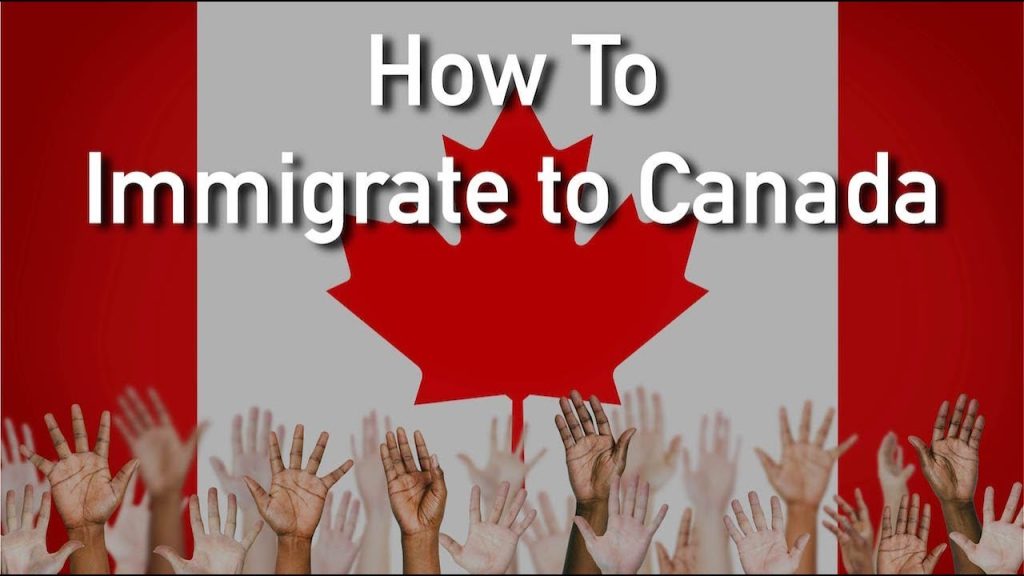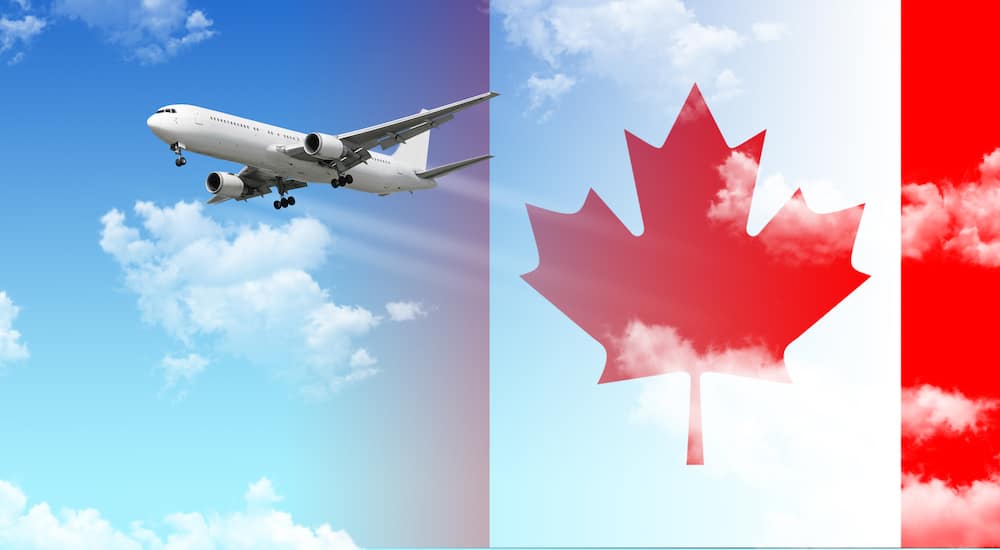immigration
How to Immigrate from the US to Canada

How to Immigrate from the US to Canada
There are many things to think about if you’re in the United States and contemplating moving to Canada, from figuring out your eligibility to finding out where the best areas to reside are. This step-by-step guide on how to immigrate to Canada from the US will help you discover the perfect location to settle down and take advantage of everything that Canada has to offer!
Fastest routes for immigrants from the US to Canada
The three quickest routes for US citizens and legal residents to immigrate to Canada are shown below.
1- express entry
Express Entry is perhaps the easiest way to apply for immigration to Canada. Canada uses it as its main method for processing skilled worker applications for permanent residence (PR). The United States is the second-largest source nation for immigrants entering Canada via Express Entry. For Canadian permanent status, it is anticipated that U.S. citizens and residents may be asked to complete an Express Entry application. In addition to other factors, they have a high level of education, great language abilities, and suitable professional experience.
Additionally, there are three federal skilled worker immigration programs included in the Express Entry system. The following criteria apply to each of the programs:
Program for Federally Skilled Workers (FSWP)
Canada invites skilled people to relocate permanently in order to address the labor shortages brought on by an aging population and a dropping birth rate. Canada has attracted outstanding workers from all over the globe thanks to this program, including university professors, licensed nurses, and IT professionals. If you satisfy the FSWP eligibility criteria listed below, you may apply for Canadian permanent residence.
The National Occupational Classification (NOC) skill levels 0, A, or B are equivalent to one year of full-time, paid work.
By submitting an English or French exam that corresponds to a level 7 on the Canadian Language Benchmark, you may demonstrate your language competency in reading, writing, speaking, and listening (CLB).
Your degree or certification has been acknowledged by an approved Canadian entity, such as a university or college, and you are now able to submit an Educational Credential Assessment (ECA) report.
You will be given 67 out of a possible 100 points on the first admissions procedure depending on your age, education, work experience, language competence, adaptability, and if you have a genuine job offer in Canada.
government program for skilled trades (FSTP)
The FSTP is one of three federal economic projects controlled by the Express Entry system of the Canadian government. Applying for permanent status via the FSTP is one of the alternatives available to skilled tradesmen who want to move to Canada. Applicants to the FSTP may have lower CRS scores than other Express Entry candidates, in part because they are not required to show documentation of their educational background.
possess a certificate of qualification that has been certified by a Canadian body, or work full-time for a Canadian company.
submit a language proficiency exam with a minimum Canadian Level Benchmark (CLB) score of 5 for speaking and listening and a CLB 4 for reading and writing.
possess two years of full-time tradework experience
Can you provide an example of your abilities and experience?
Class with Canadian Experience (CEC)
In order to be eligible to apply for permanent residence via the CEC stream, you must meet the requirements listed below:
Meet the basic standards for language competency in the four test areas of speaking, hearing, reading, and writing in either English or French.
a minimum of one year’s worth of competent job experience, whether it be two years’ worth of part-time employment or one year’s worth of full-time work, in Canada
Your work experience must have been attained when you had a valid temporary visa and work permit.
2- Program for Provincial Nominations (PNP)
The quickest way to enter Canada is via the Express Entry System since it gives you more CRS points when a province nominates you. Similar to the United States, Canada has a large number of provinces, each with its own set of regulations. The country is divided into 13 provinces and territories, each of which has a separate executive branch. Immigration is significantly impacted by Canada’s provinces. As part of its Provincial Nomination Program, a province may nominate you if you have specialized knowledge that is required in that province (PNP). 11 of the total 13 provinces have PNPs in place.
Another secure option for making a Canadian permanent residence application is to express interest in a certain province. Your prospects of being granted PR status are significantly increased by a provincial nomination. If you construct a profile on the Express Entry System and use that profile to apply for a PNP, if your PNP application is approved, your CRS score might rise by 600 points. You’ll have to show that you have ties to that province and that you want to stay there. For example, living close to family or having a reliable job offer in a certain region can increase your chances of getting nominated.
3- Family Support
Numerous family members have crossed the border into Canada throughout the years and made homes there. If your spouse, parents, or children are already residents of Canada, you could be eligible to immigrate there under family sponsorship.
Citizens of and permanent residents of Canada may sponsor:
Common-law partners or spouses
Anyone who supports you must show they have the financial means to support you and any additional family members for a certain time frame.
NAFTA, also known as the Agreement between Canada, the United States, and Mexico (CUSMA)
A trade agreement between Canada, Mexico, and the US is known as the Canada-United States-Mexico Agreement (CUSMA). NAFTA was its previous name. It reinforces the strong economic ties that already exist between the three countries. Because of the good relationships these nations have with one another, travel between them is easier. Although you do not automatically get permanent status in Canada as a result of this connection, you are given the measures to do so if you so want.
If you are a US citizen or permanent resident, you may not need to submit a Labour Market Impact Assessment (LMIA) with your work visa application. In general, a lot of Canadian workers either can’t or don’t want to get this paperwork. Before employing a foreigner, a Canadian corporation must show that they first tried to recruit a Canadian citizen or permanent resident. If they are unable to locate a suitable candidate, a job opening on the market will result, necessitating the hiring of a foreigner. As a consequence, the LMIA will be advantageous.
In Canada, there are several sectors where you may work without an LMIA work permit. You will probably get hired more often by Canadian employers. If you have a valid employment offer, you may enter Canada with a work visa. After gaining valuable Canadian work experience for a year, you may want to consider submitting an Express Entry Profile via the Canadian Experience Class (CEC) stream in order to apply for permanent residence in Canada. This approach permits you to live and work in Canada while you determine your PR status, despite the fact that it is not the easiest method to enter the country.
How much does it cost to immigrate from the United States to Canada?
Any international move involves a number of costs, many of which are hard to keep track of. Knowing exactly what expenditures you will incur for the visa fees, cost of living, and moving expenses is essential for creating a budget for your move from the US to Canada. Where you now reside, where you’re going, and how much you need to move are the last three elements that determine moving costs. Therefore, these costs are unique to each immigrant. The cost of migrating to Canada and the cost of living there compared to the US are considerably easier to quantify since there are substantial fixed expenditures connected with these components.
Costs of Canadian Immigration
If you wish to apply for immigration to Canada from the US, you may do so through a few different major paths. The most popular of them is the Express Entry program. The Provincial Nominee Programs (PNPs) in Canada are used by many candidates to raise their chances of being awarded permanent status. Your Provincial Nominee Program (PNP) or Express Entry profile processing fees must first be paid. Depending on the province or territory you are applying to, these processing fees vary. You can see the costs on your Express Entry or PNP profile after you’ve completed your application, however you virtually always have to pay the processing fees for both immigration profile types.
Permit for Temporary Residency
If you want to migrate to Canada from the US with a temporary residence or work visa, there are fewer, lower upfront charges to pay. If you want to gain permanent status in the future, you will still be obligated to make the appropriate fees for permanent residency. The major options for someone to temporarily remain in Canada are by obtaining a work permit, a study visa, a temporary residence permit, or by using a family sponsorship program like a Super Visa.
The following processing charges are necessary for each temporary residence permit:
Study permission ($150 CAD)
Super Visa, a temporary residence visa (CAD$100)
Maximum family rate (CAD$500) for a temporary resident visa
Permit to Work ($155 CAD)
Once you have obtained the necessary visa or permit and paid the immigration fee, you may start making arrangements for your travel from the US to Canada.







